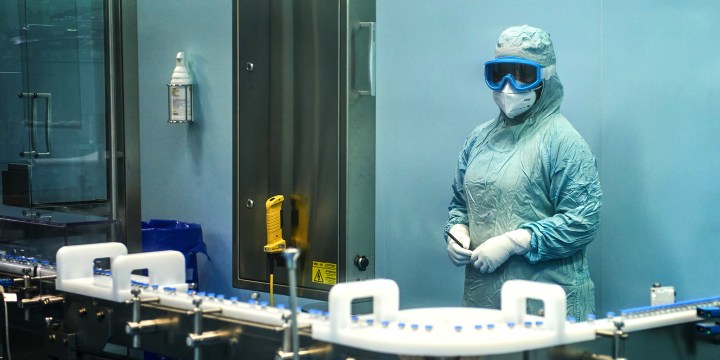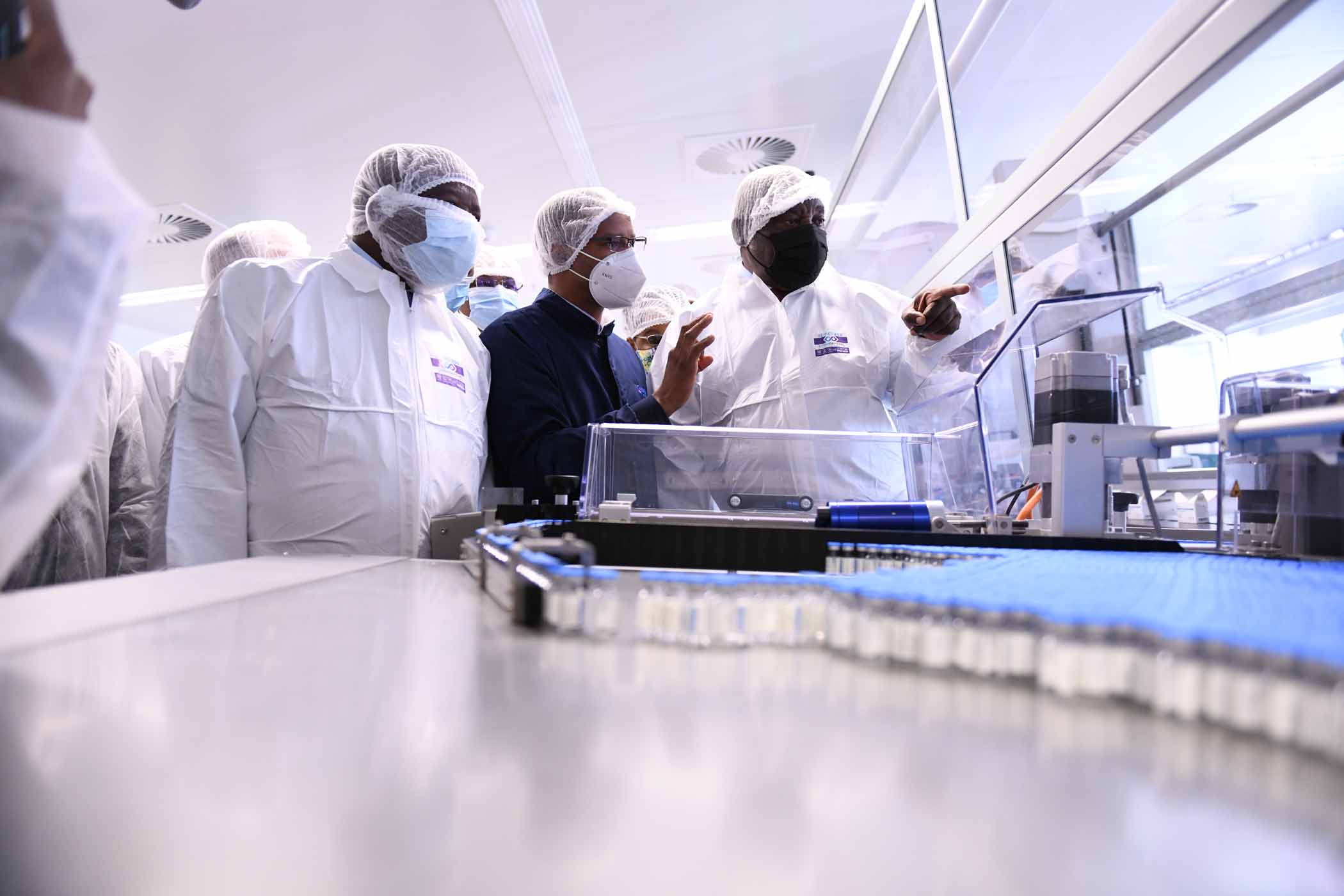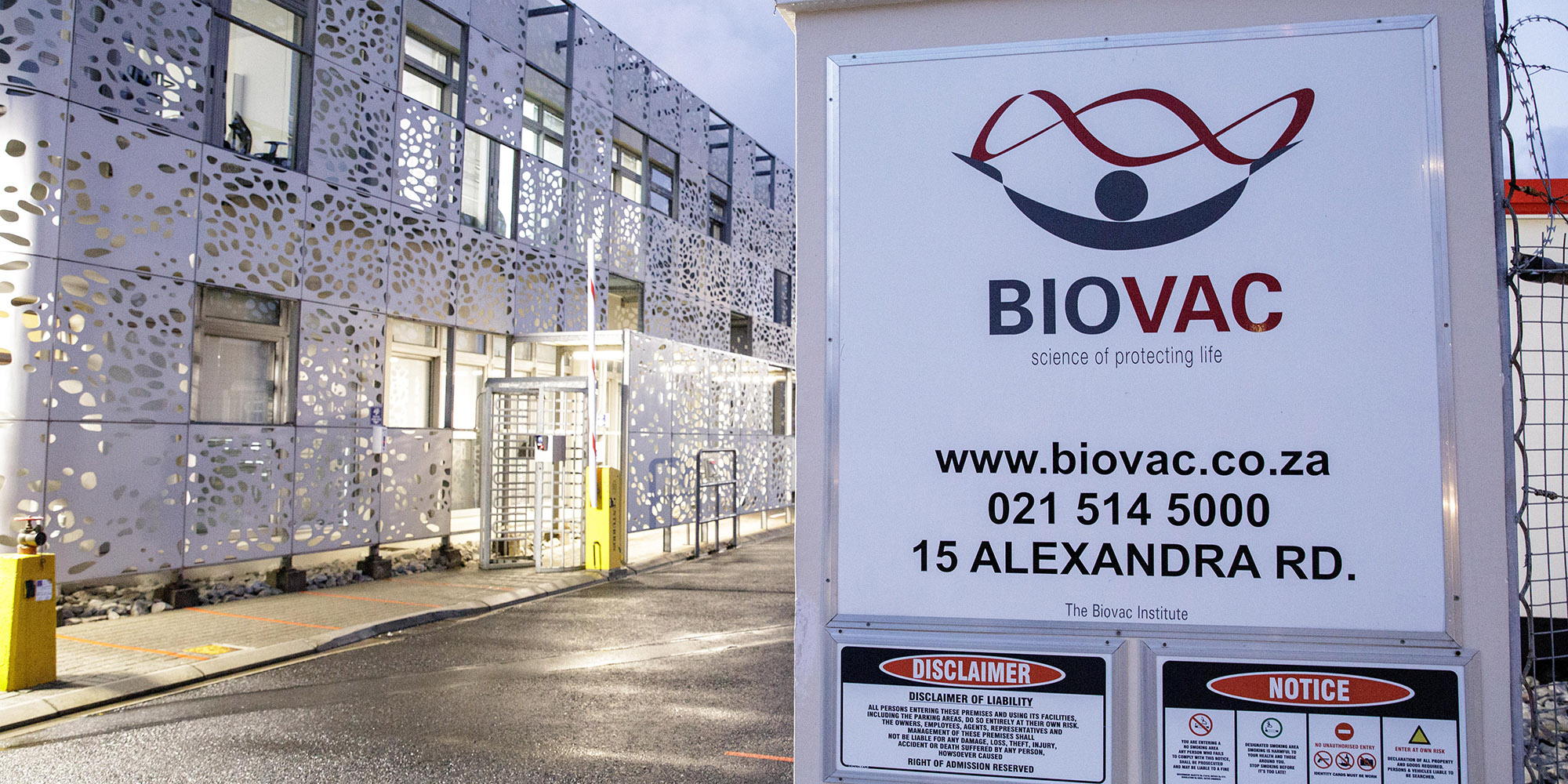DOSE OF PRACTICALITY OP-ED
Make public procurement mechanisms accessible to local manufacturers of health products

Supporting South Africa and Africa’s capacity to manufacture vaccines and other medical products is a complex and challenging task with real public health consequences, needing more coordinated and streamlined capabilities and infrastructure.
South Africa has the infrastructure and capabilities to produce high-quality, safe and effective health products – not only for the local South African market, but also for export purposes.
It is against this background that the recent vaccine tender awarded to India-backed Cipla instead of South African vaccine manufacturer Biovac sparked a debate about South Africa’s focus on and support of the local manufacturing industry in the healthcare sector. There are real public health consequences to consider and there have been many high-level recommendations made to improve the support of local manufacturing.
But what are the practical, actionable steps that need to be taken to support the growth, economic and social contribution of this sector in the broader healthcare environment and the country’s broader economy?
Medicines and vaccines are highly regulated and need to be assessed for safety, quality and efficacy. These standards are developed and enforced by the South African Health Products Regulatory Authority. In cases where global procurement mechanisms exist for certain categories of health products of great public health importance, international standards need to be adhered to by manufacturers. The process can be technically complex and financially prohibitive for local manufacturers.
There are a few options available to address this issue, such as establishing African standards that are “easier” to comply with. The disadvantage of this approach is that these standards may not be widely recognised.
The alternative is to support local manufacturers in compliance with international regulatory standards. This would require both technical and financial support from government entities to ensure the competitiveness of local manufacturers seeking to compete for global public procurement contracts.
Skills erosion
Manufacturing in the healthcare sector is technically complex and there is a shortage of skills in this area. Resourcing of local manufacturing facilities is dependent on market demand and its predictability. In terms of public procurement at a local level, this has been an issue for local manufacturers. One also needs to consider the broader local manufacturing ecosystem, which requires allied skills and industries to function optimally.
For instance, artisans such as plumbers and electricians are required to support manufacturing value chains. This skills base has largely been eroded in South Africa for various reasons, including the lack of focus on technical colleges.
The World Economic Forum recommends that “public- and private-sector interests need to converge”, which highlights the need for new industrial policy collaboration models, starting with new skills development models. To address this widespread need, innovative ways of training, including vocational training, should be considered. Traditional forms of training – generally of longer duration – will jeopardise local manufacturing capacity through delays in making skills available.
Read more in Daily Maverick: Africa could lead the way in precision medicine
Most manufacturing in South Africa and on the rest of the continent still relies on the import of production inputs which are key for the final product, including ingredients and equipment. These inputs are subject to currency fluctuations due to local currency volatility and can be difficult to predict and also significantly influence the final product pricing.
Does BRICS hold the key?
Since most pharmaceutical production inputs are procured from India and China, will a common currency in BRICS affect the cost of production inputs from these countries for African countries, in particular South Africa?
The creation of a common BRICS currency will be discussed at the upcoming BRICS Summit in South Africa in August 2023. This is a controversial topic riddled with complexity, and believed to be a non-starter in some quarters.

President Cyril Ramaphosa, Deputy President David Mabuza and Health Minister Dr Zweli Mkhize with Aspen CEO Lawrence Schwartz during a visit to the company’s sterile manufacturing facility on 29 March 2021. (Photo: Gallo Images / Die Burger / Lulama Zenzile)
In addition, previous BRICS Summit discussions included commitments to cooperation among members on vaccine development. However, South Africa would need to capacitate and expand the required human capital base and associated policy frameworks to fully exploit this opportunity.
Locally manufactured products are likely to be more expensive to procure than some imports, which makes it challenging for local manufacturers to compete with imports. However, broader industrial policy objectives which seek to expand local manufacturing capacity to support employment and economic growth should trump short-term savings on specific tenders.
Pooled procurement of common production inputs and removal of any import tariffs will help greatly to reduce final production costs.
Government policy coordination
According to the World Economic Forum, “the link between a thriving manufacturing sector and economic growth is a direct and significant one, particularly regarding employment and industries that themselves are linked. In fact, manufacturing has the largest multiplier effect of any economic sector.”
The multiplier effect of manufacturing in terms of contribution to the economy should be prioritised to address the declining levels of manufacturing that South Africa has been suffering.
The case of the Biovac tender highlights the ongoing tension between public health policy and industrial policy. What is required is coordination and collaboration across government departments to align behind broader public policy objectives – even those government departments which do not consider public health and industrial policy as their primary mandate and core strategic objectives.
Practical coordination and policy implementation will require leadership to drive the overall objectives and also practical implementation approaches such as intergovernmental team decision-making on key policy parameters affecting the healthcare sector.
Read more in Daily Maverick: We are unlikely to be equitably able to access lifesaving, affordable medicines under NHI
Healthcare procurement organisations have limited resources and must make decisions that are most appropriate from a public health perspective. However, there is room to consider broader contexts which differentiate between acquisition costs of healthcare commodities vs cost effectiveness, which is a measure of the cost of a medicine, including its health outcomes/clinical benefits.
These are scientific methodologies which are used in a limited way in South Africa already. When considering locally manufactured medicines, it would be prudent to consider the overall economic cost in terms of impacts of procurement decisions.
Procurement policy alignment
International procurement mechanisms, such as those that exist for key public health commodities such as vaccines, weaken links between health and industrial sectors at a local level. Alignment of objectives from a policy and operational perspective is required to ensure that various factors related to public health and industrial policy are considered.
Several factors need to be considered in terms of procurement of health products in South Africa. There are significant differences between public- and private-sector procurement requirements, processes, pricing and regulations. Local manufacturers are often not considered in procurement processes where international accreditation requirements are not in place – this is common for certain product categories in the private sector.
Furthermore, the ongoing disconnect between national and provincial procurement processes, requirements and systems, most of which are not consistent and do not prioritise support of local manufacturers, put these procurement opportunities out of reach for local manufacturers regardless of international and local regulatory approval status – particularly those with limited resources for engagement with procurement decision-makers in provinces and sometimes at national health facility level.
The lack of provincial presence of some manufacturers also leads to their exclusion from public procurement processes – for example, having a presence in Gauteng and wanting to sell products in KwaZulu-Natal may lead to exclusion.
Alignment of provincial and national procurement systems is required.
Production capacity
Even though local manufacturing capacity and infrastructure exists in pockets, production capacity is not always fit for purpose nor fully used. During the pandemic, many local manufacturing facilities were able to repurpose infrastructure to address changing needs.
However, this type of public health emergency demand is unpredictable and therefore manufacturing capacities and capabilities can become redundant quickly once demand declines.
Effective collaboration and coordination between local manufacturers and government bodies is critical to ensure that existing and new manufacturing capacities are fully used to address public health needs. It is ironic that on the one hand there are stock-outs and on the other hand underused manufacturing capacity.
One needs to bear in mind that manufacturing capabilities and public health needs may not converge due to differences in the type of manufacturing required for specific products. The more agile manufacturing capabilities are, the more adaptable this capacity can be due to changing public health needs.
Export promotion
Africa accounts for only 3% of the global manufacturing of medicines, despite bearing 24% of the global burden of disease and accounting for 11% of the world’s population. With differing regulatory compliance requirements across African markets and international markets, it has been historically challenging for local manufacturers to export health products to other markets.
The establishment of the African Medicines Agency will alleviate these challenges depending on how it is operationalised.
Government agencies such as Trade Invest Africa need to implement a practical strategy to promote and support not only investment into South Africa but also outward export opportunities.

Biovac’s facility in Pinelands, Cape Town. (Photo: Gallo Images / ER Lombard)
Previous industrial policy approaches took a nationalistic view of pharmaceutical manufacturing. Significant levels of local and international funding support were provided to establish and, in some cases, ramp up local manufacturing capacities.
Despite this policy prioritisation, this focus resulted in duplication of efforts and did not necessarily result in improved competitiveness of the sector nor decreased import dependence. Decades later, most African countries are still dependent on imports of medicines, vaccines and medical devices. About 60% to 80% of medicines are still imported into Africa.
African entrepreneurs still claim that access to finance, skills and support is lacking. This results in missed opportunities, brain drain of critical skills and ongoing import dependence.
The recently launched African Continental Free Trade Agreement (AfCFTA) calls for the creation of regional value chains – but what does this mean?
Country and company competencies and the ability to contribute to manufacturing value chains either directly or indirectly will be critical to optimising efficiencies in value chains and broadening participation of countries and companies without duplication of efforts. This will reduce the overall cost of production through regional contribution to manufacturing value chains through supply of production inputs and/or services.
Making healthcare procurement decisions that will affect large populations over a significant period is a complex and challenging task. The factors discussed should be incorporated as far as possible to ensure that unintended consequences that could have direct or indirect negative impacts overall are avoided or managed. The infrastructure and capabilities across the continent need to be more coordinated to allow streamlined collaborations and support local manufacturing. DM
Kirti Narsai is Principal Researcher at the Nelson Mandela School of Public Governance at the University of Cape Town, leading research on healthcare value chains in the context of the AfCFTA. This op-ed is part of a series showcasing the research and the thematic work areas of the Nelson Mandela School.

















 Become an Insider
Become an Insider
Comments - Please login in order to comment.